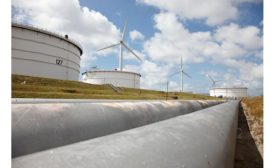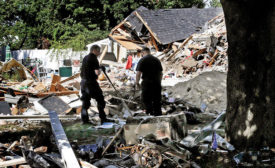Home » Keywords: » gas
Items Tagged with 'gas'
ARTICLES
Coronavirus and Construction
COVID-19 and Falling Oil Prices Roil Oil and Gas Sector
Construction Projects Delayed
Read More
'Major' Mass. Gas Leak Follows Feds Call For Regulation Changes One Year After Deadly Gas Explosions
Lawrence Experiences Another Leak on Friday Morning
Read More
Gas Service Nearly Fully Restored About 14 Weeks After Mass. Pipeline Explosions
Columbia Gas on track to meet self-imposed Dec. 19 restoration deadline
Read More
The latest news and information
#1 Source for Construction News, Data, Rankings, Analysis, and Commentary
JOIN ENR UNLIMITEDCopyright ©2024. All Rights Reserved BNP Media.
Design, CMS, Hosting & Web Development :: ePublishing









